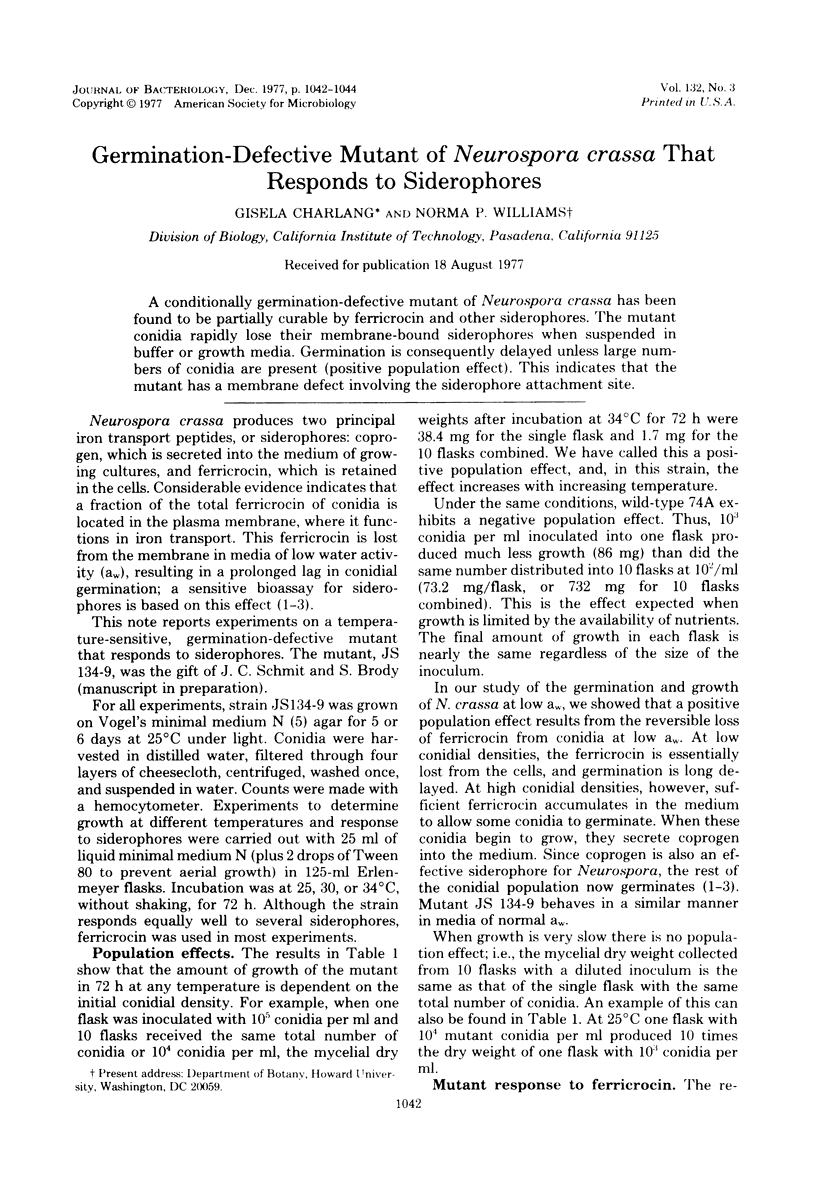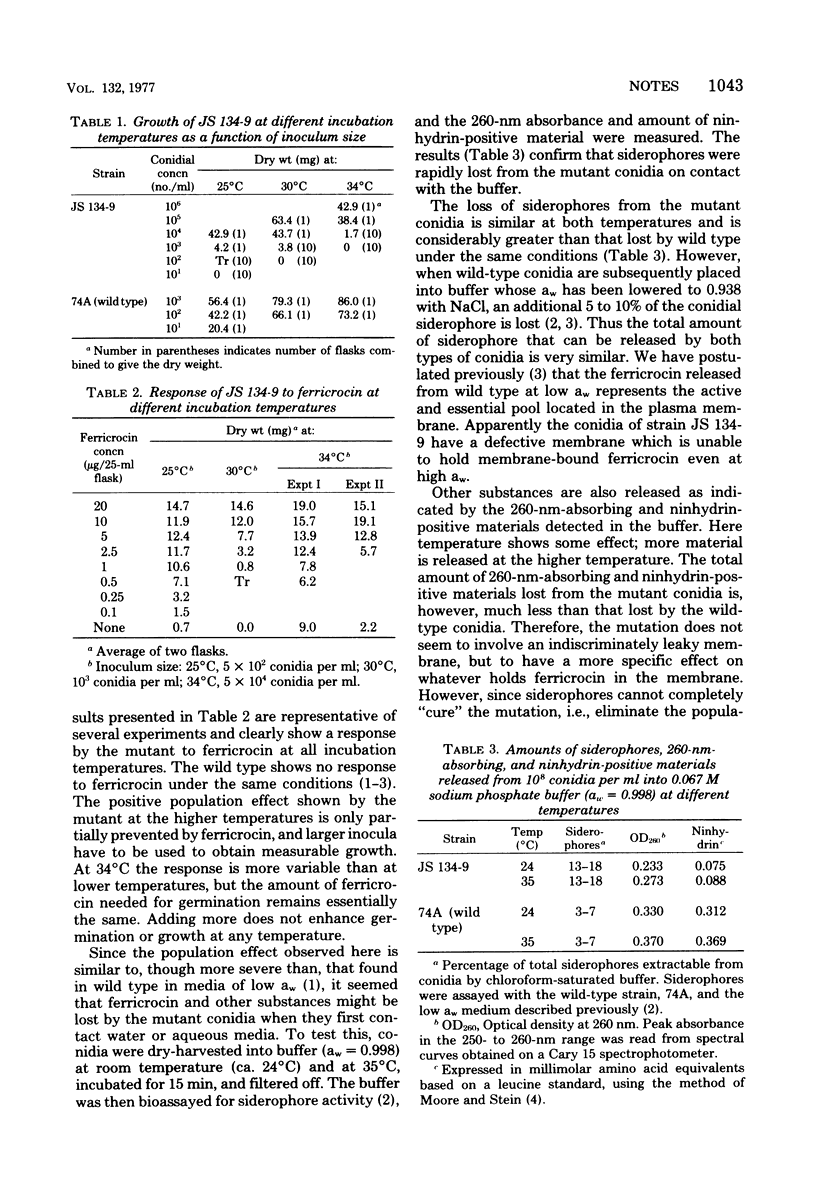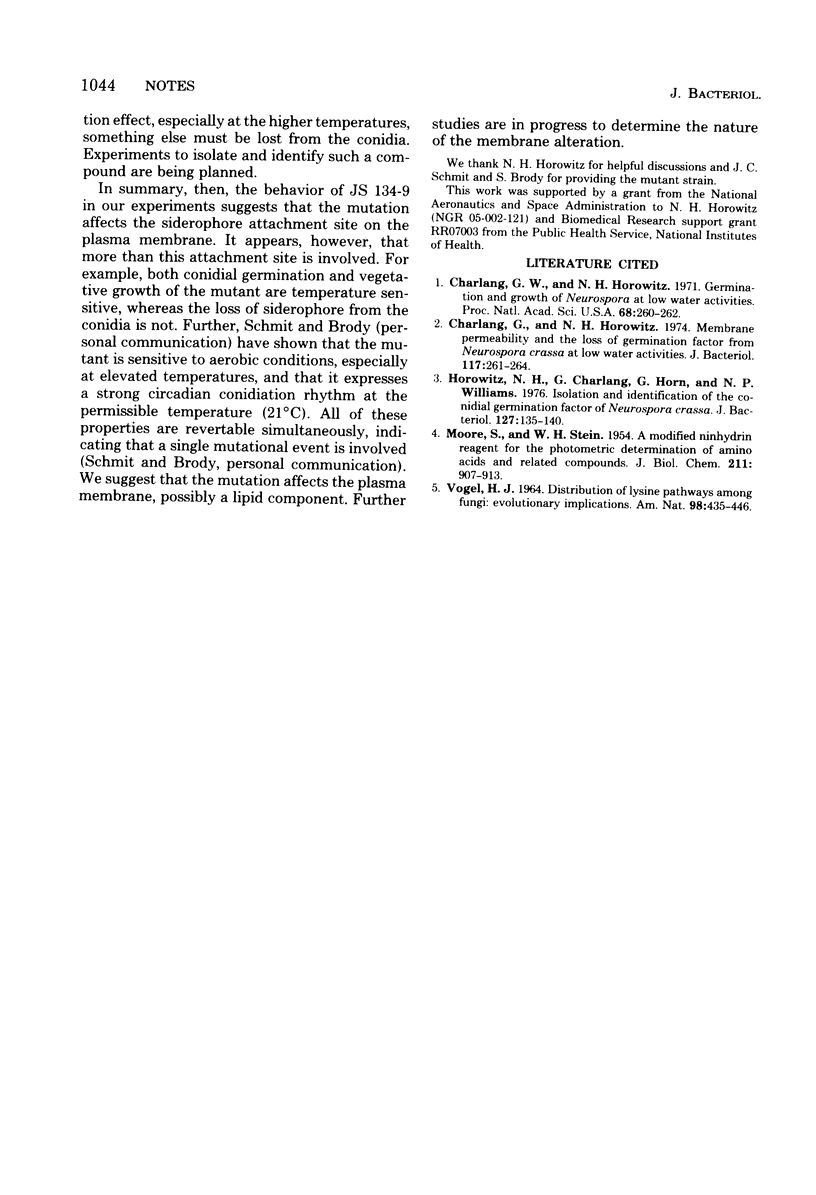Abstract
A conditionally germination-defective mutant of Neurospora crassa has been found to be partially curable by ferricrocin and other siderophores. The mutant conidia rapidly lose their membrane-bound siderophores when suspended in buffer or growth media. Germination is consequently delayed unless large numbers of conidia are present (positive population effect). This indicates that the mutant has a membrane defect involving the siderophore attachment site.
Full text
PDF


Selected References
These references are in PubMed. This may not be the complete list of references from this article.
- Charlang G. W., Horowitz N. H. Germination and growth of neurospora at low water activities. Proc Natl Acad Sci U S A. 1971 Feb;68(2):260–262. doi: 10.1073/pnas.68.2.260. [DOI] [PMC free article] [PubMed] [Google Scholar]
- Charlang G., Horowitz N. H. Membrane permeability and the loss of germination factor from Neurospora crassa at low water activities. J Bacteriol. 1974 Jan;117(1):261–264. doi: 10.1128/jb.117.1.261-264.1974. [DOI] [PMC free article] [PubMed] [Google Scholar]
- Horowitz N. H., Charlang G., Horn G., Williams N. P. Isolation and identification of the conidial germination factor of Neurospora crassa. J Bacteriol. 1976 Jul;127(1):135–140. doi: 10.1128/jb.127.1.135-140.1976. [DOI] [PMC free article] [PubMed] [Google Scholar]
- MOORE S., STEIN W. H. A modified ninhydrin reagent for the photometric determination of amino acids and related compounds. J Biol Chem. 1954 Dec;211(2):907–913. [PubMed] [Google Scholar]


